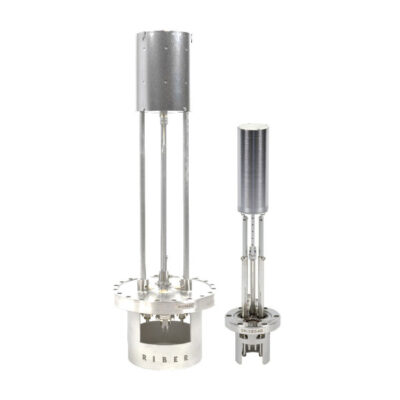Dopant sources – ABN D
Details
- Low thermal inertia/low volume/uniform beam distribution
- High thermal efficiency (limits outgassing)
- Extremely efficient, reliable and reproducible source
- Provides a pure, stable and reproducible beam flux
- Crucible volume and shape tailored to dopant evaporation – Dopant uniformities better than ± 1 %
- Optional integrated water panel/shutter
Presentation
Riber cells for doping applications are designed to obtain both highly stable beams and rapid variations in beam flux over several orders of magnitude. These cells generally employ shallower and more conical crucible to enable the use of lower temperatures for the highest dopant levels and to ensure excellent doping uniformities.
Layout
Technical information
| Cellcharacteristics | ABN 135 D | ABN 151 D | ABN 160 D | ABN 220 D | ABN 500 D |
|---|---|---|---|---|---|
| Source capacity | 11/22 cc* | 25 cc | 65 cc | 220 cc | 500 cc |
| Temperature stability | ±0,2°C | ||||
| Crucible shape | Conical | ||||
| Crucible material | PBN | ||||
| Filament type | Single Tantalum filament | ||||
| Thermocouple type** | C-type | ||||
| Typical operating temperature | 600 –1200°C | ||||
| Maximum outgassing temperature | 1400 °C | ||||
| Power supply | One power supply / One temperature controller | ||||
* Crucible dependent – 2 versions – Uniformities will vary
** Please consult Riber for K type thermocouples







